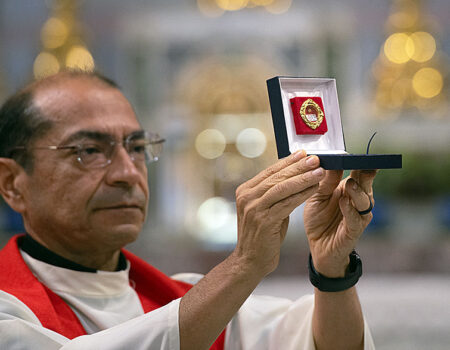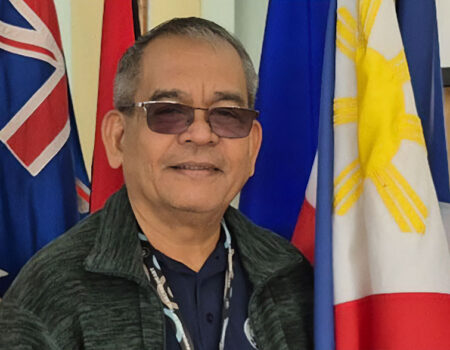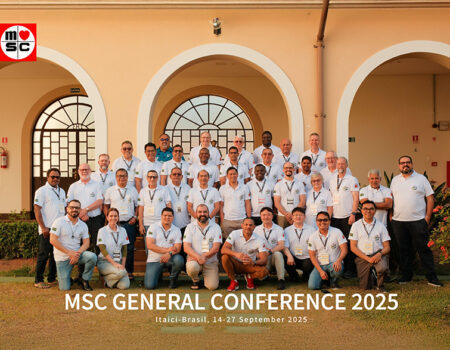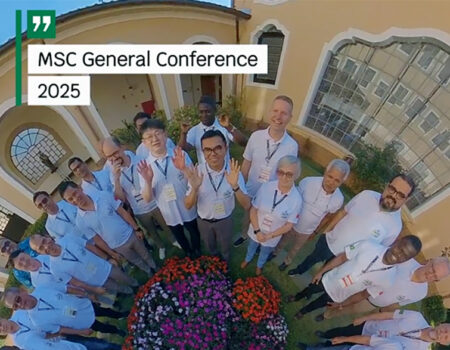Reflection: My great friend, the Pope
Thursday June 26, 2025
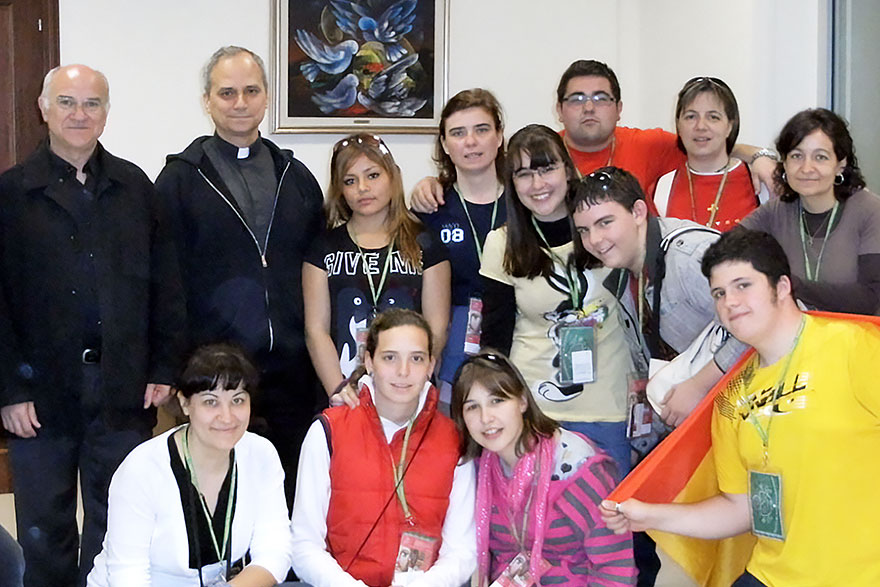
Father Paco, MSC, was a friend of Francis, and Father Ángel, OSA, is a friend of Leo XIV.
Those of us who have not had the good fortune to know the person behind the public figure, to know Francis as Jorge Mario Bergoglio or Pope Leo XIV as Roberto Prevost, have another blessing: we can talk to and listen to those who had or still have a close friendship with them.
The day after Leo XIV was elected Pope, Fr. José Manuel González Trobo, msc, forwarded me a WhatsApp message he had received that morning. ‘I hope to have some time during the Archpriest meetings to tell you what the election of Pope Leo XIV, in the person of Robert Prevost, my great friend and Augustinian brother for 24 years, has meant to me.’ The original message is from Fr. Ángel Camino, OSA, Episcopal Vicar of the Eighth Vicariate in the Archdiocese of Madrid, to which the MSC parish of San Federico belongs. I replied to Fr. José Manuel with a humorous comment: ‘You’re getting to know a lot of friends of Popes… heh, heh…’ The fact is that Fr. Paco Blanco, msc, Provincial Superior of the Missionaries of the Sacred Heart in Spain, was also a friend of Pope Francis. They met when Fr. Paco was a missionary in Buenos Aires, in a ‘shanty town’ on the outskirts of the Argentine capital. It was one of the areas for which the then-Bishop Jorge Mario Bergoglio, later Pope Francis, was responsible as pastor of the diocese. He highlights ‘his commitment as a pastor who was close and attentive to the community’. Without a doubt, a definition that also describes him as pontiff.
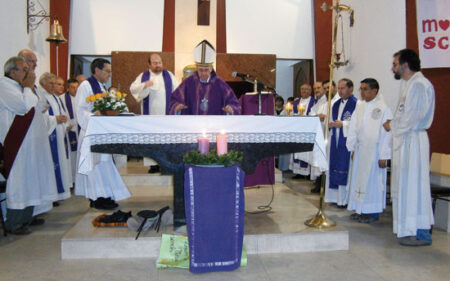
Francis’ “worn-out shoes.” Fr. Paco says he never saw him arrive at the parish by car. “We had a parish in the slum of Soldati, the first dedicated to Our Lady of Fatima in Buenos Aires. Bishop Bergoglio often visited us. He always arrived by bus or ‘premetro’; I never saw him arrive in his official car.
What’s more, he didn’t let anyone drive him to his residence. I even remember once when he felt unwell and had to go to the hospital. I offered to drive him, but he flatly refused. He only agreed to let me take him to the ‘premetro’ stop.’
Have you seen the photo of the shoes that were placed on Francis’ coffin? Fr. Paco says, ’I remember him, always with his worn-out shoes.’
He himself comments that ‘Francisco has been very Bergoglio,’ referencing the consistency of the Pope’s decisions and gestures during his years as pontiff, continuing what he already did as bishop. Fr. Ángel speaks in the same terms, expressing the hope and conviction that ‘Leo XIV will be very Roberto,’ since ‘it cannot be otherwise.’
Always with the people. Francis’ decision to move to Santa Marta instead of staying in the Vatican was surprising, but the fact is that in Argentina, as bishop, he also preferred to live in a residence with other priests. He liked contact with people and did not want his “position” to separate him from their daily reality. ‘When he visited us in the slums, he asked about everyone. He remembered everything they had told him in previous conversations and was interested in those who were ill or suffering. He showed a great deal of interest, especially in migrants. There were many people from Bolivia and Paraguay in that area. He always went up to them to ask how they were,’ says Fr. Paco.
Are we surprised now by his continued interest, as Pope, in the dignity of migrants, his welcome to exiles and his great sensitivity towards people living in refugee camps? It is not surprising that his first Apostolic Journey, one of the most widely publicised, was to Lampedusa. This is the place of arrival for hundreds of migrants who use this Italian region as a gateway to Europe from Africa.
On the other hand, you might recall his visits to prisons and the significant gesture of designating the gate of Rebibbia prison in Rome as one of the Holy Doors for this year’s Jubilee.
These were his answers to the disciples’ questions: “When did we see you a stranger and welcome you, or naked and clothe you? When did we see you sick or in prison and visit you?” (Mt 25:38-39). He also did this as bishop.
Leo XIV continues with his routines. In the same vein, ‘now, Roberto Prevost is Leo XIV, but he cannot do without his previous life,’ says Fr. Angel. A very simple gesture. When he was appointed Prior General of the Order of St. Augustine, he suddenly disappeared, and no one knew where he was. He went to Genazzano, to the shrine of Our Lady of Good Counsel. They made him bishop and he went back to Genazzano. They elected him pope, and the next day, on Saturday, without saying anything, he asked the driver to take him 70 km from Rome to Genazzano. It was a private visit; all he wanted was to pray before the Virgin.’
Another detail. ‘Pope Francis told him when he appointed him cardinal, “You live in the houses opposite the Vatican where the cardinals live”. He left, but every day of the week, from Monday to Friday, at 7:30 in the morning, he went to pray Lauds with the community at Santa Monica, celebrated Mass, had breakfast, and then went to work. When lunchtime came, he would return to the Augustinians to eat. Two days after being elected Pope, he called the General of the Augustinians to say, ‘On Tuesday, I’m coming to eat with you’. And he did. By this I mean that there are certain attitudes that he will continue to maintain.’
The consistency of ‘everyone, everyone, everyone’. Francis has left countless phrases during his papacy: ‘Make noise’; ‘Kick forward’; ‘Don’t stand on the balcony of life’; ‘Go out and be Samaritans’. But one has remained as a summary: ‘In the Church, there is room for everyone’. Summed up in ‘everyone, everyone, everyone’. This, which often seems like a happy improvisation or a brilliant idea inspired by a moment of inspiration when writing a speech, is something that Fr. Paco emphatically points out, based on his experiences with Bishop Bergoglio, that ‘the same Bergoglio of “everyone, everyone, everyone” as Pope is the one who, as bishop, was very angry with a priest who refused to baptise the son of a prostitute. He made it clear that the Church must be open to everyone without exception. And he did so while being very aware of the reality of our slum, marked by vulnerability. He did not turn anyone away for having children out of wedlock or for being addicted to drugs. Knowing the person through his friends, knowing what they were like as priests and bishops, we understand many of his decisions and courses of action. That ‘everyone, everyone, everyone’ is the soul of synodality. Of listening, of sharing, of teamwork. The Synod on Synodality is a coherent gesture in Francis’ papacy, with bishops, lay men and women, religious men and women… “everyone, everyone, everyone”.
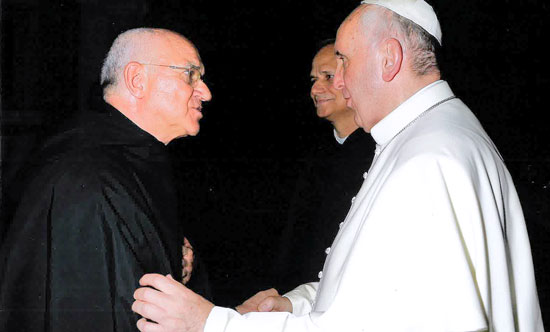
Vatican Media
Leo XIV, a close leader. ‘Roberto, ever since I have known him, has been a man of God. Capable of living the Augustinian attitude. The fundamental quality is community, but there is another, interiority, to find the God within you and, from there, see everything and discover everything. Leo XIV is an interior man. He is a man who trusts in God—a man of faith. In addition, he puts his natural intelligence at the service of others. In two ways, one charismatic and the other more pastoral. When he became General, he spent 12 years at the service of the community. His mission was to be with the Augustinian communities, and he travelled all over the world. He was a close friend of all the Augustinians and was able to establish relationships with people. He knew the Augustinians of the world by name. He was in schools, parishes, residences, and universities, with young people, children, and the elderly. He became one with each person.’ This is how Fr. Ángel describes how Leo XIV exercised his position of responsibility as Roberto Prevost, Prior or Bishop.
Synodal before becoming Pope. ‘Because of this sense of Augustinian community, he is a man who believes in synodality. Will he continue with synodality? It’s in his blood. Will there be lay people in the government team that is going to be formed? There will be. He has said that, just as in dioceses there is an Episcopal Council, a bishop with his vicars, he wants to have a Council of Cardinals, where there are bishops, priests, lay people, women… It will be synodal, because of the typical quality of the Augustinian community.’
Brothers in other religions. Another surprise we saw in Francis’ gestures, and one that made more than a few people throw their hands up in disbelief, were his meetings with leaders of other religions and world leaders who are “enemies”. With some, he did not limit himself to a simple hug as a greeting, but even kissed their feet, as he did with the leaders of South Sudan, enemies and engaged in a fratricidal war. It was a surprise for most, but not for Fr. Paco. ‘I have attended some national celebrations in the cathedral of Buenos Aires, where an imam, a Jewish patriarch or a Protestant pastor has spoken at the invitation of Bishop Bergoglio.’ Pure ecumenism, which he had already promoted before being elected Pope.
A Pope with a missionary character. When I ask Fr. Ángel to tell me about the missionary character of his friend Roberto, he says: ‘He spent weeks on the back of a mule to reach certain places in the Chiclayo mission. He suffered, he lived it, he was with the people, which is why he was so moved when he mentioned his beloved diocese of Chiclayo. He was a missionary who identified with his people, knowing them because he had been among them, having involved himself with them. I know that he liked to find out what their problems were and tried to solve them. As a missionary, he embraced the doctrine of the Gospel and then passed it on by training other missionaries, trying to be with the people, to be there for others, to see their needs, to help them. He was not shy; he got involved, he worked with Caritas to find solutions to poverty in his diocese. He always did that.
‘He also understood that an important task was to train missionaries. He enjoyed interacting with seminarians, and something greatly appreciated in Chiclayo was his closeness to the priests. He was a bishop who stood alongside the priests,’ says Fr. Ángel about León XIV.
Accompanying them in the hospital. When Fr. Paco told me about Pope Francis’ relationship with the priests of his diocese when he was bishop of Buenos Aires, he said that ’when an elderly priest who had no family nearby was admitted to the hospital for any illness, he would stay with them at night.’ This is further proof that his defence of the elderly during his papacy and his insistence on caring for them were also a result of his personality, not just a stroke of genius on the part of a Pope.
The missionary gestures of Leo XIV. In my conversation with Fr. Ángel in the Archdiocese of Madrid, after describing the missionary character of Leo XIV, I asked him to tell me a significant anecdote about his missionary work in Peru as Monsignor Robert Prevost. He paused the conversation, took his mobile phone, searched through his contacts and… ‘Good afternoon, Fr. Ángel.’ ‘Hello, Jasson, very good.’ He had just called Fr. Jasson Serpertigue, who was Monsignor Robert Prevost’s secretary for many years. He told us that Leo XIV “carries the missionary spirit in his heart. He knows how to behave, how to reach people and bring peace to conflicts.” He told us two anecdotes that define Pope Leo XIV very well as a missionary. Generally, as is also the case in Chiclayo, in the most indigenous areas of the countries of America, dioceses are comprised of many different peoples and geographical regions, each with their unique expressions. ‘He liked to learn these things. I even had to explain some very colloquial phrases to him on occasion. He was interested in them and sometimes used them himself. He likes to be with people just as they are.’ Secondly, Fr. Jasson emphasises, ’he likes to be at the forefront when there is a need. Hence, the photo with him in Wellington boots in the middle of a flood. In Chiclayo, every two or three years, there is a natural disaster or problems with the farmers. That is why he was so keen to promote Caritas, which he put a woman in charge of.’
A man of peace. ‘He was a bishop who was seen reconciling villages that were fighting over resources. He even climbed the highest walls to encourage them not to despair and to calm them down, because help would come for everyone. If we take this missionary attitude to a more institutional level, he knows how to tackle the most complicated problems and also how to solve them.’ It is not surprising that, as soon as he arrived, he had such an extraordinary conciliatory attitude that he has already had a conversation with Zelensky, the president of Ukraine. Both in his first speech in St. Peter’s Square and in his audience with the media, we have heard messages calling for peace.
Towards the end of the conversation, he shared an anecdote that sums up very well who he is as a person, who he is as Roberto, Pope Leo XIV. ‘On one occasion, some young people came to the bishop’s office, desperate because they couldn’t find enough olive branches for Palm Sunday. Ten minutes later, Bishop Roberto Prevost was cutting olive branches with them.’ He is so human that once, at a youth gathering, one of the young people knew about mathematics, and since he is a mathematician, they ended up discussing mathematics.
A very human Pope. Regarding the tear that almost came out when he was presented as Leo XIV on the balcony of the Vatican, Fr. Jasson tells us another anecdote. ‘He has sometimes become very sad when he has seen clashes between priests, really sad. He knows the expression used in Chiclayo, ‘the gringos have no feelings’, that they go through life haughtily. On one of those occasions, he said that he knew this expression and affirmed that they did have feelings, many of them. He has a human dimension that is moved by things. Seeing himself clothed in Christ as Peter’s successor moved him, as it surely moved Peter himself when the risen Christ asked him, ‘Do you love me?’ (Jn 21:17). That is the human side of a Pope, Leo XIV, clothed in Christ as Peter’s successor.’ For all these reasons, we hope that “Leo XIV will be very Roberto”.
Javier Trapero (Spain)


